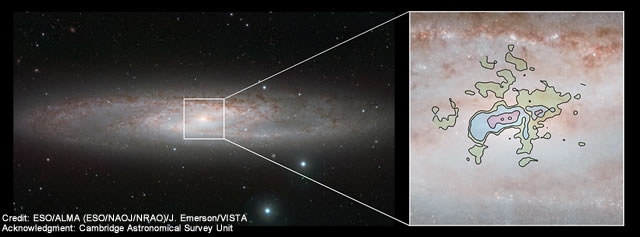Starburst to Star Bust: Astronomers ID suspect behind dearth of high-mass galaxies
| Science
Alberto Bolatto of the University of Maryland in College Park and his colleagues used the new Atacama Large Millimeter/submillimeter Array (ALMA) telescope and discovered billowing columns of cold, dense gas fleeing the disk of nearby starburst galaxy NGC 253. This study indicates that strong stellar radiation, winds of particles, and shocks induced by a number of supernova explosions drive the surrounding material away from the central part of the galaxy, leaving little fuel for the next generation of stars. This is an important finding in studying the evolution of galaxies and may help solve the mystery of the missing high-mass galaxies that theories predict should exist, but are conspicuously absent.
The study was published in the journal Nature on 25 July 2013.


Link
- Starburst to Star Bust: Astronomers ID suspect behind dearth of high-mass galaxies
- Suppression of star formation in the galaxy NGC 253 by a starburst-driven molecular wind nature, July 25, 2013
This article is including a link to a article for kids.
From Starburst to Star Bust Printer-friendly
 Space Scoop | UNAWE
Space Scoop | UNAWE
The Universe Awareness website provides children through the world with fun, easy to understand news and educational materials about the Universe. These help kids understand the size and beauty of the Universe. The “Space Scoop” section of Universe Awareness contains articles written for kids explaining current astronomy news. A Space Scoop is available for this article.